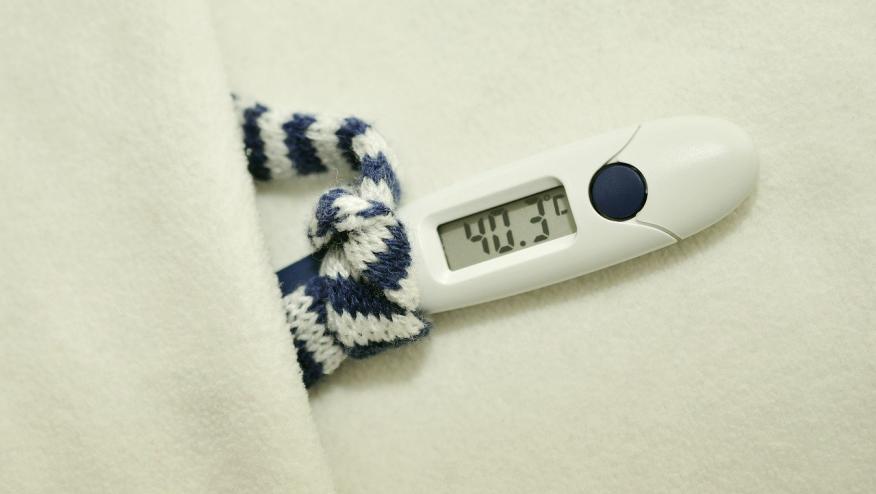Five Mistakes When Diagnosing Still’s Disease Save

Adult-onset Still's disease (AOSD) is a rare systemic inflammatory disorder of unknown etiology and pathogenesis. AOSD is likely to be the adult continuum of systemic-onset juvenile arthritis (sJIA) and hence, frequently affects young men and women below the age of 35 years.
The diagnosis is suggested by the classic triad of quotidian (spiking) fevers (> 39oC), evanescent "salmon-pink" rashes, and arthritis. Other characteristic manifestations include a prodromal sore throat, arthralgias, myalgias, weight loss, serositis, hepatomegaly (often with elevated hepatic enzymes), splenomegaly and generalized lymphadenopathy. Laboratory tests support the inflammatory nature of the disorder with leukocytosis, anemia of chronic disease, hypoalbuminemia, and hyperferritinemia. Serum rheumatoid factor and antinuclear antibodies are absent.
The clinical course is marked by sporadic exacerbations of systemic inflammation and/or chronic inflammatory arthritis. There are no diagnostic clinical manifestations, serologic tests or histopathologic findings and thus, the diagnosis is one of exclusion. It may be necessary to observe persistence of fever and other characteristic manifestations for at least 6 weeks to confirm the diagnosis of AOSD.
Management of AOSD has been revolutionized in the biologic era. Inhibition of IL-1 (anakinra) or IL- (tocilizumab) has proven highly effective when NSAIDs, steroids and DMARDs have failed. More recently these agents have been used as first line therapy soon after diagnosis for their faster efficacy and as presumptime confirmation of a diagnosis with a rapid response to either IL-1 or IL-6 inhibition.
The scarcity of this condition lends to its difficulty in diagnosis - especially in non-rheumatologists or those unfamiliar with AOSD or sJIA. I have been fortunate to have diagnosed and managed many patients with AOSD in the last 30 years. During this span, I have seen a pattern of mistakes made when diagnosing or treating AOSD. Here are my top five:
- Making an AOSD diagnosis WITHOUT the requisite triad of high fever, evanescent rash and polyarthritis (never monarthritis). While few will manifest all three at presentation, the triad will be revealed in the first 3-6 months of symptoms in nearly all. All too frequently clinicians will diagnose “Still’s disease” when an undiagnosed febrile patient has a negative infectious or cancer evaluation and a few features (arthritis, serositis, high ESR/CRP, etc.) of this syndrome. Seldom will such patients ever have AOSD. The Yamaguchi and Cush Criteria for the diagnosis of AOSD were formulated to help confirm such a diagnosis (see criteria definition below or use the Still's Diagnosis Calculator on the StillsNow.com website).
- Failure to observe/document a daily quotidian fever > 102oF. AOSD and sJIA are circadian cytokine syndromes with IL-6 or IL-1 levels peaking usually once daily (usually late night or late afternoon); this is reproducibly manifest the same fever (prodrome, magnitude, duration) at the same time of day. A Still's fever should almost never occur in the morning (during ones endogenous cortisol peak [also circadian]).
- Intermittent Fever History. As stated above, this is a daily febrile disorder that is distinctly different from other autoinflammatory diseases that have fevers lasting a limited number of days. The duration of fever is often telltale. For instance, fever may last 1-3 days (typical of familial Mediterranean fever [FMF], CAPs, Muckle Wells), or 5-21 days (TRAPS) or daily (as seen in AOSD, sJIA, or Schnitzler syndrome). Fevers that are intermittent, unpredictable or low grade (usually < 101oF).are are almost never due to AOSD.
- Over-emphasis on ferritin levels for diagnosis. Hyperferritinemia (usually >400 μg/l in men and >300 μg/l in women) has many, many causes that are much more common that the rare AOSD. Other more common causes include iron overload states (multiple transfusions), non-HIV viral infections (e.g., COVID-19), virus infection followed by solid tumors, severe liver damage, renal failure, hematological malignancy, vasculitis or the macrophage activation syndrome (MAS). Ferritin is an acute-phase reactant that is only elevated in half of patients with AOSD. In contrast, the ESR or CRP is elevated in 90% of AOSD patients. 50% of AOSD patients have an ESR >90 mm/Hg and 90% have ESR > 50 mm/Hg. Hyperferritinemia is not specific for either sJIA or AOSD, but the higher the ferritin, the greater the severity of its' cause and mortality risk. Extreme hyperferritinemia (defined as levels higher than 10,000 ng/mL) are rare, worrisome and should lead to consideration of hemophagocytic lymphohistiocytosis (HLH) or MAS.
- Treatment with TNF inhibitors. There are reports of TNF inhibitors being beneficial in AOSD, but this is primarily in the management of the chronic inflammatory arthritis (seen in up to one-third of AOSD patients). At the outset and during the inflammatory or "systemic" stages of the disease, features like fever, rash, serositis, LFTs, hepatomegaly and weight loss will only be controlled by high dose corticosteroids (1-2 mg/kg/day) or IL-1 (eg, canakinumab, anakinra) or IL-6 (eg, tocilizumab) inhibitors. There are no head-to-head trials to instruct us which is the better agent in new onset, active inflammatory Still’s. In my experience both work, and when they don’t the other may.
REFERENCES
Cush JJ. Adult onset Still’s disease. Bull Rheum Dis 49(6):1-4, 2000
- Cush Criteria: requires 10 points for an AOSD diagnosis (2 points each for major features; 1 point for each minor feature
- Major Criteria: quotidian fever >102F; evanescent JRA rash; simultaneous elevation of WBC >12.5 and ESR >40; seronegativity; and carpal ankylosis
- Minor criteria: onset age < 35 yrs.; prodromal sore throat; serositis; RES involvement (lymphadenopathy, hepatosplenomegaly or increased LFT’s); polyarthritis; and cervical or tarsal ankylosis
- Yamaguchi Criteria: requires 5 criteria (with 2 or more being major criteria)
- Major criteria: fever > 39C; arthralgia > 2 weeks; typical rash; and neutrophilic leukocytosis
- Other criteria; sore throat, lymphadenopathy and/or splenomegaly, hepatic dysfunction, and the absence of rheumatoid factor and antinuclear antibody










